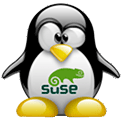NAME
qix - bounce colored lines around a window
SYNOPSIS
qix [-display host:display.screen] [-foreground color] [-background color] [-window] [-root] [-mono] [-install] [-visual visual] [-segments int] [-spread pixels] [-size pixels] [-count int] [-color-shift degrees] [-delay usecs] [-random] [-linear] [-solid] [-hollow] [-xor] [-no-xor] [-transparent] [-non-transparent] [-additive] [-subtractive] [-poly int] [-gravity] [-no-gravity] [-fps]
DESCRIPTION
The qix program bounces a series of line segments around its window. This is truly the swiss army chainsaw of qix programs. If you know of one with more display modes, I want to know about it.
OPTIONS
qix accepts the following options:
| -window | Draw on a newly-created window. This is the default. |
| -root | Draw on the root window. |
| -mono | If on a color display, pretend we’re on a monochrome display. |
| -install | Install a private colormap for the window. |
| -visual visual | |
| Specify which visual to use. Legal values are the name of a visual class, or the id number (decimal or hex) of a specific visual. | |
| -segments integer | |
| How many line segments should be drawn. Default 50. | |
| -spread integer | |
| How far apart the endpoints of one segment should be from the next. Default 8. | |
| -size integer | |
| The maximum distance one endpoint of a segment is allowed to be from the opposite end of that segment. Default 0, meaning unlimited. | |
| -count integer | |
| How many qixes to draw. Default 1. | |
| -color-shift degrees | |
| If on a color display, the color of the line segments will cycle through the spectrum. This specifies how far the hue of each segment should be from the next, in degrees on the HSV wheel. Default 3. | |
| -delay microseconds | |
| How much of a delay should be introduced between steps of the animation. Default 10000, or about 0.01 seconds. | |
| -random | The qix will wander around the screen semi-randomly. This is the default. |
| -linear | The opposite of -random: the qix will travel in straight lines until it reaches a wall, and then it will bounce. |
| -solid | If this is specified, then the area between the line segments will be filled in with the appropriate color, instead of the qix simply being composed of one-pixel-wide line segments. This option looks really good in color. |
| -hollow | The opposite of -solid; this is the default. |
| -xor | If this is specified, then qix segments will be drawn and erased with xor, instead of being drawn in some color and erased in the background color. This implies -mono, in that only two colors can be used. |
| -transparent | |
| If this is specified, and -count is greater than 1, then each qix will be drawn in one color, and when they overlap, the colors will be mixed. This looks best in conjunction with -solid. | |
| -non-transparent | |
| Turns off -transparent. | |
| -additive | If -transparent is specified, then this option means that the colors will be mixed using an additive color model, as if the qixes were projected light. This is the default. |
| -subtractive | |
| If -transparent is specified, then this option means that the colors will be mixed using a subtractive color model, as if the qixes were translucent filters. | |
| -poly int | How many vertices each qix-line should have: the default is 2, meaning the traditional qix line shape. Three will yield triangles, and so on. |
|
-gravity
-no-gravity | Whether there should be downward attraction. For example, the options -gravity -linear will make everything move in nice smooth parabolas. Gravity is off by default. |
| -fps | Display the current frame rate and CPU load. |
ENVIRONMENT
| DISPLAY | to get the default host and display number. |
| XENVIRONMENT | |
| to get the name of a resource file that overrides the global resources stored in the RESOURCE_MANAGER property. | |
SEE ALSO
COPYRIGHT
Copyright © 1992 by Jamie Zawinski. Permission to use, copy, modify, distribute, and sell this software and its documentation for any purpose is hereby granted without fee, provided that the above copyright notice appear in all copies and that both that copyright notice and this permission notice appear in supporting documentation. No representations are made about the suitability of this software for any purpose. It is provided "as is" without express or implied warranty.
AUTHOR
Jamie Zawinski <jwz@jwz.org>, 13-aug-92.
Thanks to Ariel Scolnicov for the -poly and -gravity options.
